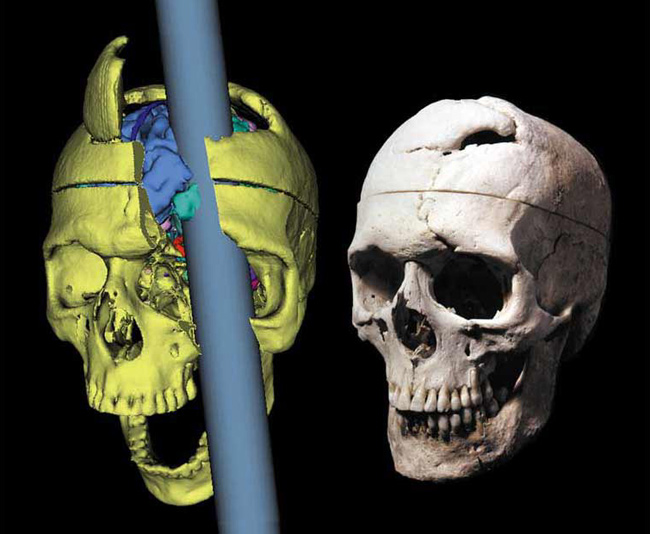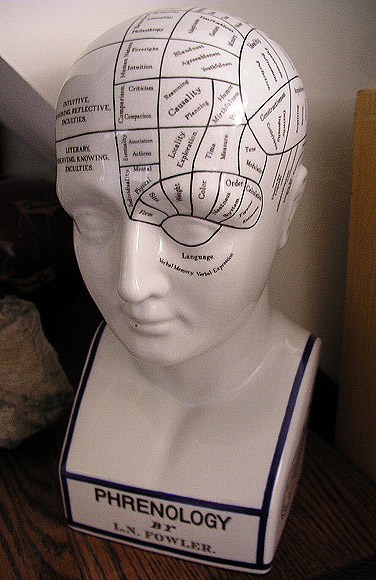Moral thinking and feeling have a neurological basis.
Evolutionary understanding is typically informed by analysis of structure and function. To further understand moral behavior, then, biologists consider the anatomy and physiology of the brain and nervous system (Pfaff 2007).
 Perhaps the most fascinating case is a man who lost some his social and moral bearing due to an unusual brain injury: a railroad worker in the 19th century named Phineas Gage. Gage was using his tamping iron to compact an explosive charge when it detonated prematurely and sent the 1½-inch-wide rod up under his cheek bone, through his brain, and out the top of his skull. Gage, remarkably, survived. But he had lost some of his brain, and with it, some of its function. Whereas before the accident Gage had been "quiet and respectful," afterwards he became "fitful, irreverent, indulging at times in the grossest profanity (which was not previously his custom), manifesting but little deference for his fellows." The attending physician profiled the dramatic change, noting that "the equilibrium or balance, so to speak, between his intellectual faculties and animal propensities, seems to have been destroyed" (Harlow 1868, pp. 339-340).
Perhaps the most fascinating case is a man who lost some his social and moral bearing due to an unusual brain injury: a railroad worker in the 19th century named Phineas Gage. Gage was using his tamping iron to compact an explosive charge when it detonated prematurely and sent the 1½-inch-wide rod up under his cheek bone, through his brain, and out the top of his skull. Gage, remarkably, survived. But he had lost some of his brain, and with it, some of its function. Whereas before the accident Gage had been "quiet and respectful," afterwards he became "fitful, irreverent, indulging at times in the grossest profanity (which was not previously his custom), manifesting but little deference for his fellows." The attending physician profiled the dramatic change, noting that "the equilibrium or balance, so to speak, between his intellectual faculties and animal propensities, seems to have been destroyed" (Harlow 1868, pp. 339-340).
 One can easily overstate the correspondence, as was done at the time by one enthusiast for phrenology, a theory now abandoned in disrepute. Persuaded that there were discrete personality traits that mapped onto the surface of the skull, he imagined that in Gage's brain "the iron had passed through the regions of the organs of benevolence and veneration . . . hence his profanity, and want of respect and kindness" (Macmillan 2000, quote on p. 350). Avoiding such speculative and unsubstantiated extreme claims, one can still hope to identify how certain areas of the brain may be associated with different dimensions of moral mental activity, as illustrated broadly in Gage's case.
One can easily overstate the correspondence, as was done at the time by one enthusiast for phrenology, a theory now abandoned in disrepute. Persuaded that there were discrete personality traits that mapped onto the surface of the skull, he imagined that in Gage's brain "the iron had passed through the regions of the organs of benevolence and veneration . . . hence his profanity, and want of respect and kindness" (Macmillan 2000, quote on p. 350). Avoiding such speculative and unsubstantiated extreme claims, one can still hope to identify how certain areas of the brain may be associated with different dimensions of moral mental activity, as illustrated broadly in Gage's case.